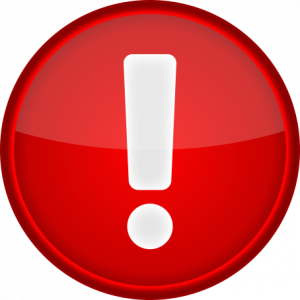After the surgery at home
After the operation, the ability to function will be restored within a few weeks and the use of aids can be gradually reduced according to the instructions of the hospital. Aids are usually used for 2 to 6 weeks.
Pain is normal after surgery because the damaged joint surfaces are removed from the bone and the muscles and other soft tissues are manipulated. This causes swelling, a sensation of burning and pressure and bruises in the operated lower limb. The post-operative pain is different from what you experienced before the surgery and it gradually lessens with time. Active rehabilitation and exercising require regular use of pain medication. Pain must not be an obstacle to moving around and doing the exercises. The experience of pain and need for pain medication are very individual.
The follow-up examination will take place at Coxa 2 to 3 months after the operation. You will receive an invitation to the outpatient clinic at Coxa by post.
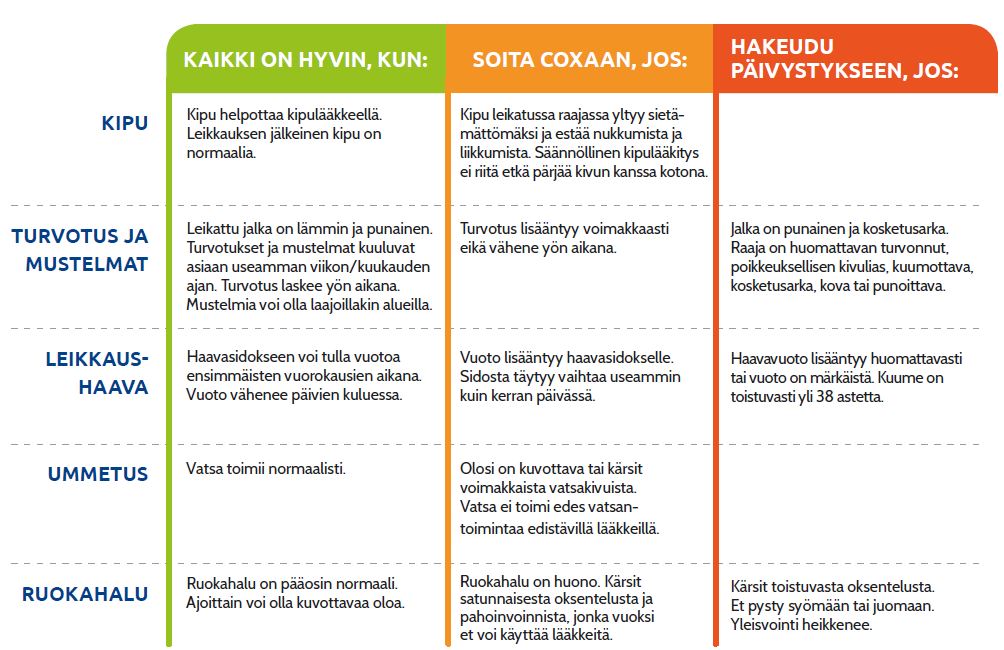
We will call you
Our nurse will call you a week after the surgery. If you still have questions about the operation, you can ask the nurse.
How to use pain medication?
During the first weeks at home, you will need to take painkillers in the same dose as at the hospital. In addition to your regular pain medication, you will also have been prescribed with painkillers to be taken when needed and you can take them when you feel the need. At home, everyday life is more active than at the hospital, which can increase pain and swelling as a result of moving about. It is extremely important that pain does not slow down your rehabilitation process.
Before you are discharged from the hospital, the nurse will instruct you on the use of medicines at home and provide you with the prescriptions you need. Use painkillers as instructed until walking and exercises do not cause any pain. Gradually stop using pain medication by trying taking a smaller dose. The need for pain medication is very individual, so no specific period for taking them is specified.
Stomach-protective medication
Stomach-protective medication is used as prescribed due to the stress condition of the body caused by the surgery and the use of pain medication. Stomach-protective medication prevents irritation of and damage to the gastric mucosa.
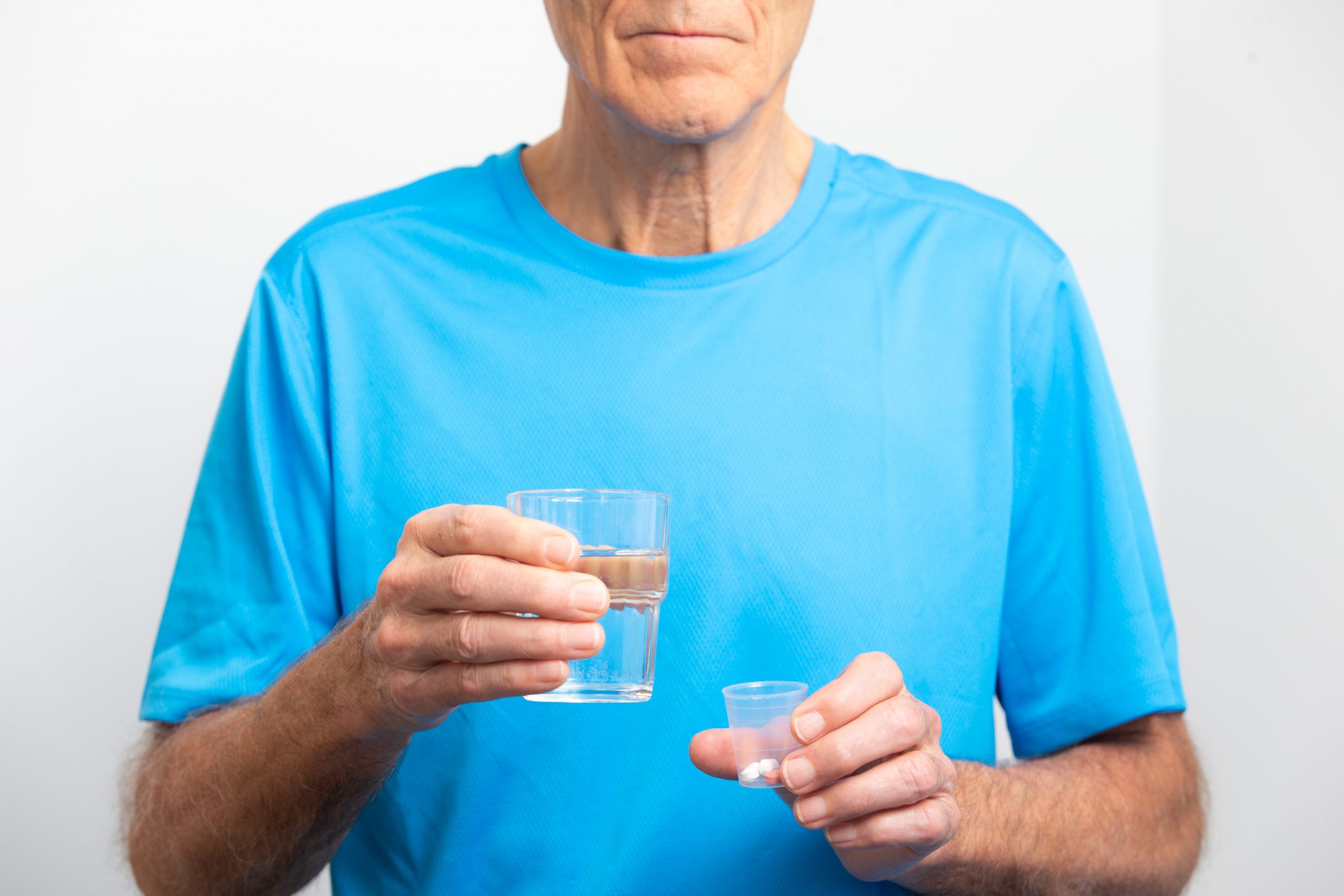
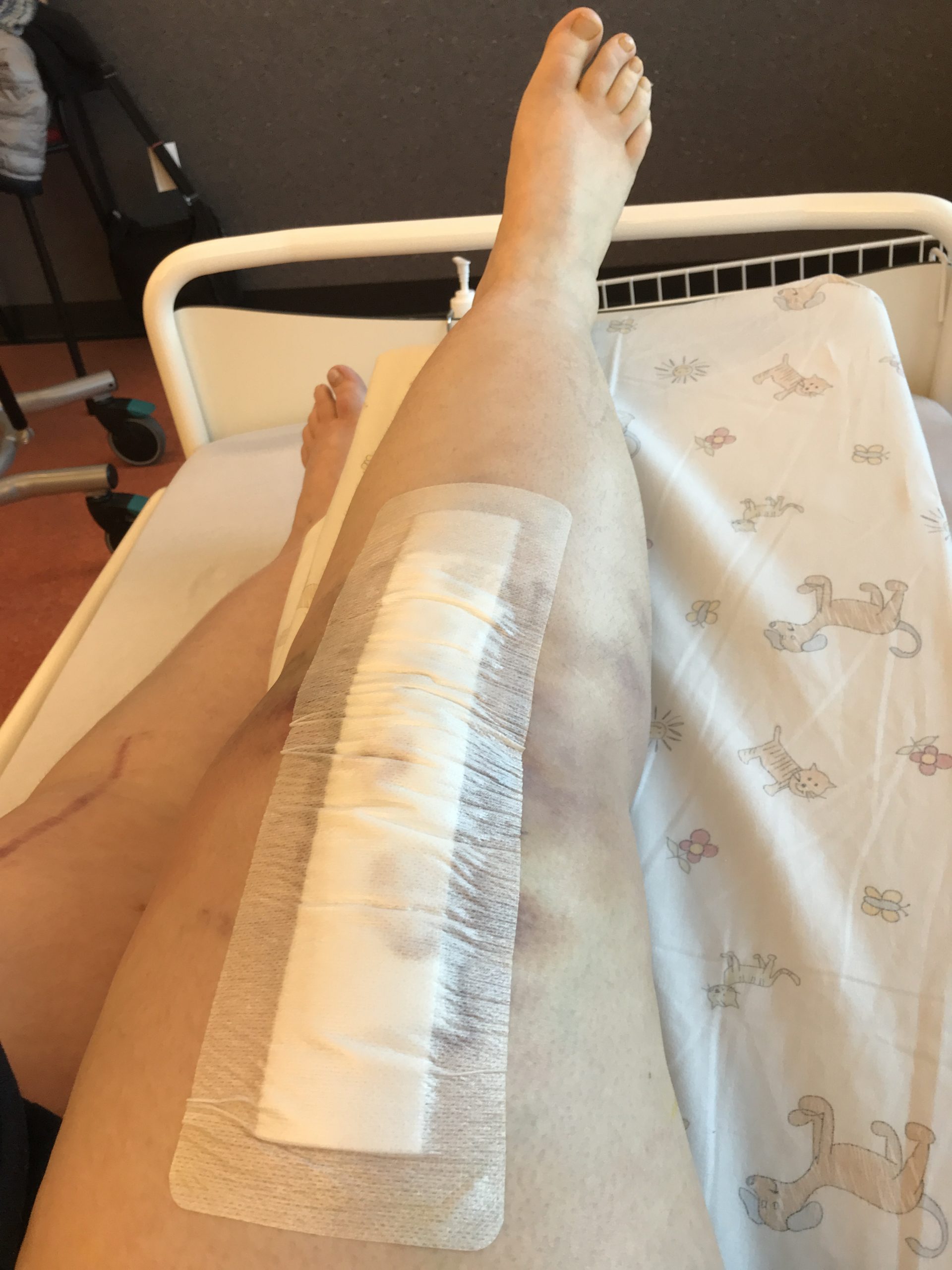
Swelling and bruises
Swelling in the wound area and operated limb as a whole is normal. The extent and duration of swelling varies individually and may last several months. In the early stages, you can prevent swelling by avoiding prolonged sitting and standing. A raised position and cold treatment several times a day also reduce swelling.
Bruises are often formed around the surgical wound and also in a wider area, but they disappear by themselves. Bruises can be painful and often take a long time to heal.
Remember to rest
It is important to rest several times a day in order to balance the strain. Excessive strain can slow recovery and make it difficult to use the joint, increasing pain and swelling. You can also rest on your side and place a pillow in between the knees to improve the position. Avoid prolonged sitting. Holding the foot in a raised position prevents swelling. Cold treatment in the procedure area can help to reduce pain and swelling.
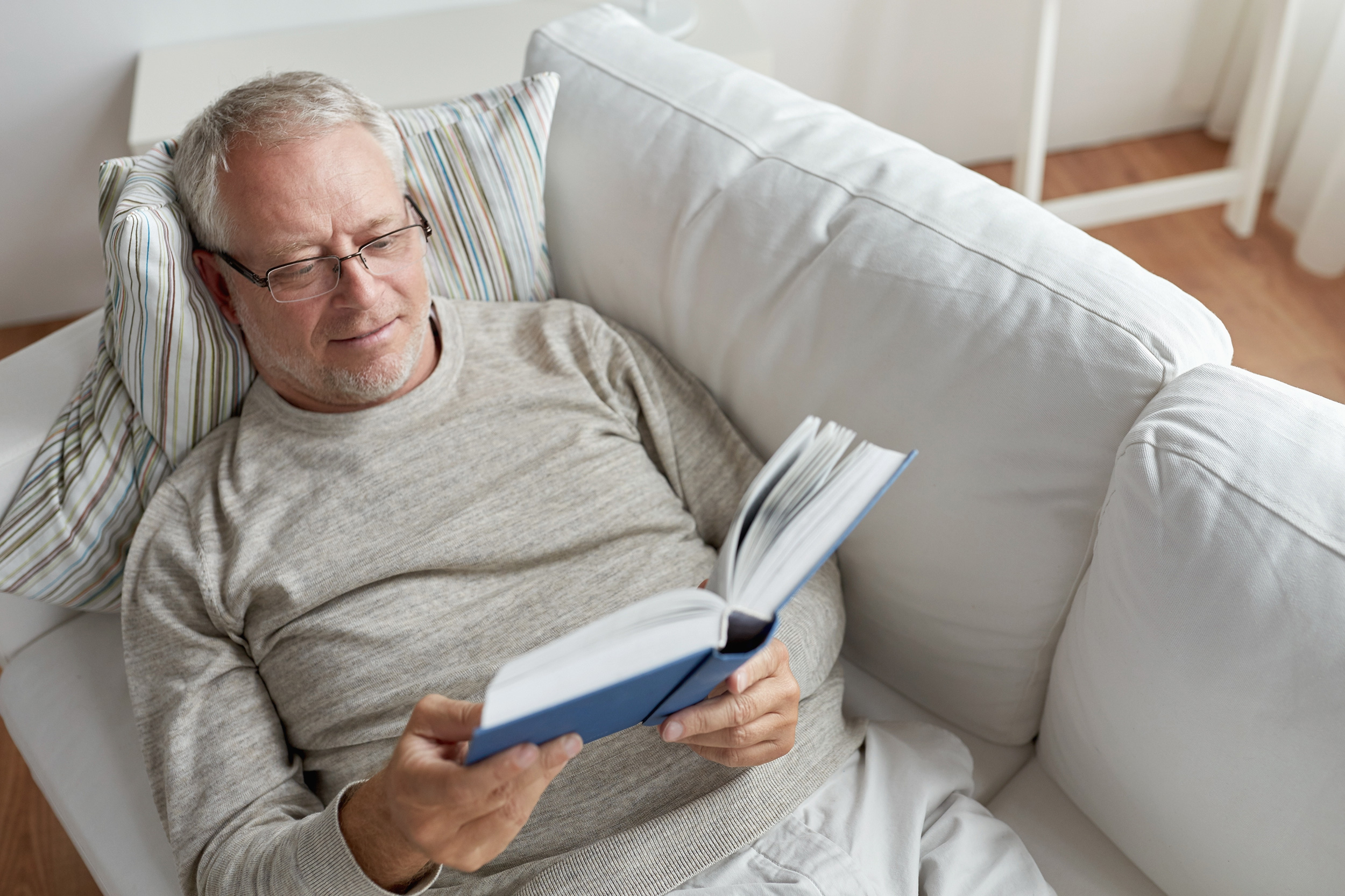
Prevention of vein thrombosis
Physical activity is the best way to prevent vein thrombosis. After the surgery, you will also be prescribed medication to prevent vein thrombosis. At the ward, you will receive guidance on taking the medication.
Wound monitoring
The normal healing process of the wound area involves redness and a burning sensation, which may increase after the exercises. A temperature difference compared to the unoperated lower limb is normal several months after the operation.
- Keep a dressing on the wound for five days. If the wound continues to ooze, protect it with a dressing until it is dry.
- Always replace the wound dressing with clean, just-washed hands.
- You can wash normally. Dry the operated area with a clean towel by gently pressing.
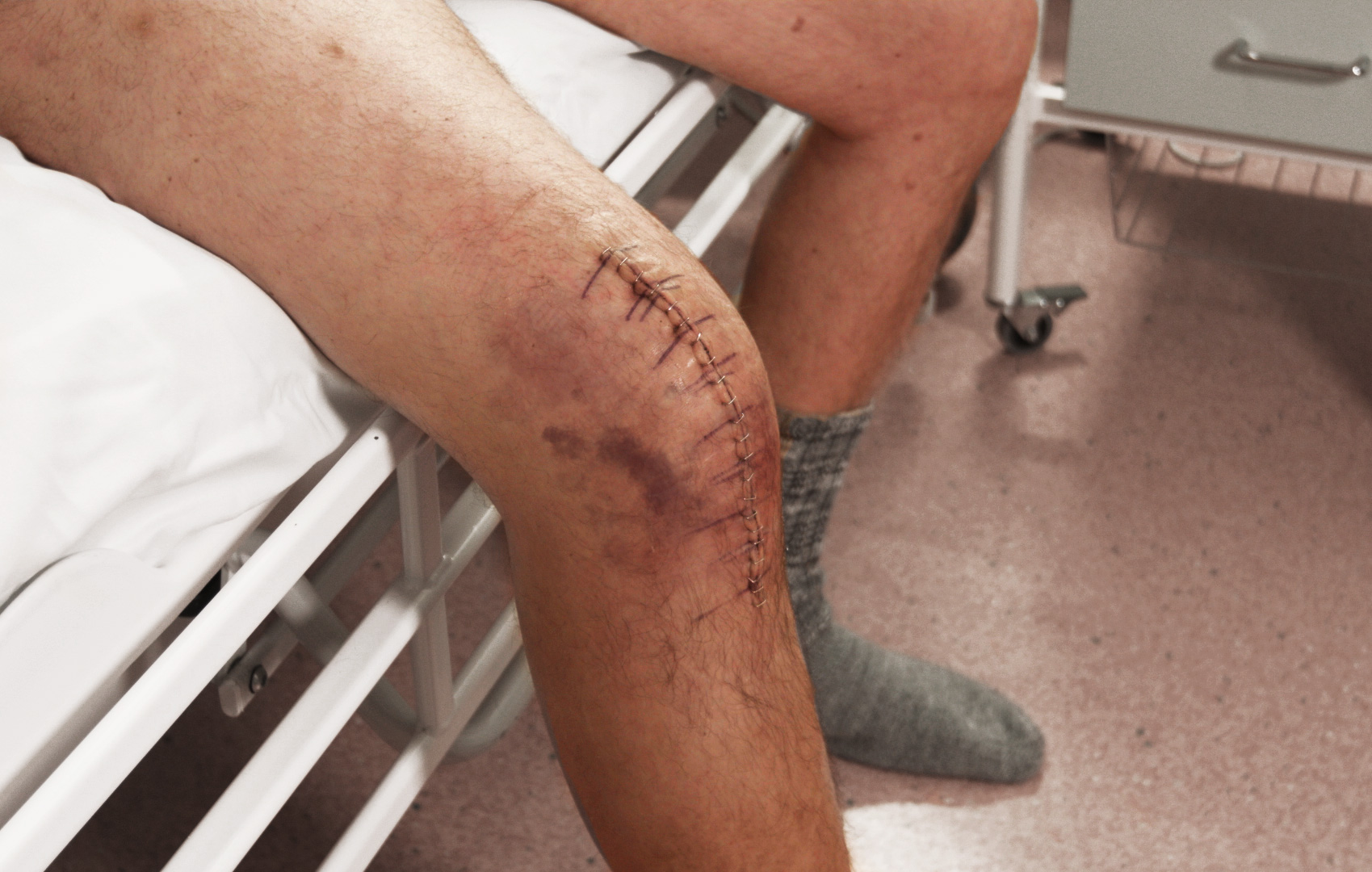
Staple removal
When you have been discharged from the hospital, book a time for staple removal at your local health centre or with a private service provider. You can go to the sauna when the staple holes have closed, at the earliest on the day after the staples were removed.
Problems?
Always contact the Customer Service of Coxa tel. +358 03 311 715 if there are problems in the operated area or:
- there is increasing pain, swelling, redness or burning in the wound area
- the wound discharges pus
- bleeding from the wound increases
- your temperature exceeds 38 °C for 24 hours
Do not start taking antibiotics for a wound healing issue before Coxa’s doctor has assessed whether it is necessary.
